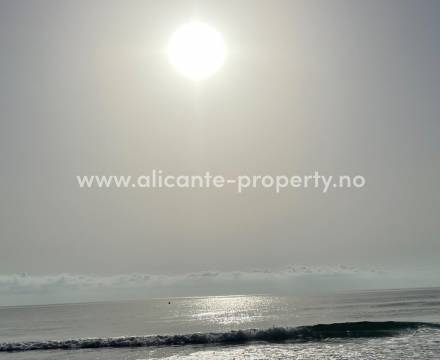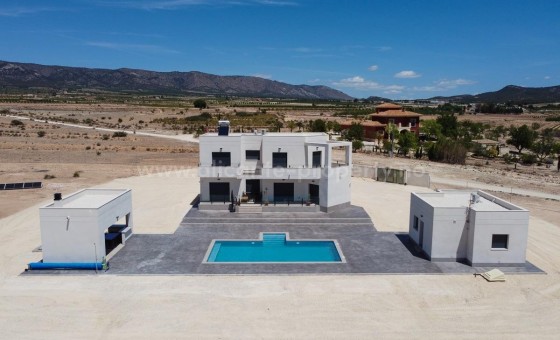
Sunny days, temperature and climate in Alicante province
Conditions such as sunny days, temperature and climate are very good reasons to settle in Alicante province. For many, this is the very reason why they want to settle somewhere on the Costa Blanca coast for all or part of the year.
Summer days in Alicante province
Alicante is known for its good climate and has a significant number of sunny days throughout the year. On average, Alicante has around 300 days of sunshine a year, making it a popular destination and a fantastic place to live. Some places in the province have among the most sunny days in Europe. Average sunshine hours and temperature per day (approximate number) in January is 7 sunny hours and daytime temperature 13 degrees, February, 8 sunny hours and daytime temperature 14 degrees, March 10 sunny hours and daytime temperature 17 degrees, April 11 sunny hours and daytime temperature 19 degrees, May 12 sunny hours and daytime temperature 22 degrees, June 13 hours of sunshine and 26 degrees, July 13 hours of sunshine and daytime temperature 29 degrees, August 12 hours of sunshine and daytime temperature 29 degrees, September 10 hours of sunshine and daytime temperature 26 degrees, October 9 hours of sunshine and 22 degrees, November 8 hours of sunshine and 17 degrees, December 7 hours of sunshine and daytime temperature 14 degrees..
There are some differences in the number of sunny days between the south and the north of the Alicante province. In general, the southern regions of the province, such as Orihuela, Torrevieja, Santa Pola, can experience a higher number of sunny days compared to the northern areas such as Denia, Calpe and Alcoy. This difference is due to several factors. Firstly, the province is affected by the mountains of the Costa Blanca, which act as a natural barrier and create variations in the climate. The mountains can affect cloud formation and precipitation patterns, and thus affect the amount of sunshine that reaches the various areas of the province. On the eastern side of the mountains, which includes the southern regions, the air can be more stable and prevent cloud formation, leading to more sunny days. The southern areas are also influenced by warm air currents from the Sahara desert, which help to maintain sunny conditions. The northern areas may experience more cloud cover and precipitation due to the proximity to the mountains and exposure to moister air from the sea. This can lead to somewhat fewer sunny days compared to the southern regions.
The definition of a sunny day in Spain can vary depending on which source or organization is used. Generally speaking, a common definition is that the sun must be visible for at least 50% of the day for it to count as a sunny day. This means that if the sun is visible for half or more of the day, it is considered a sunny day in Spain. In Norway, we may have other definitions of a sunny day. It may even be different from south to north.
Temperature and climate for Costa Blanca
As said, the Costa Blanca mountains play a significant role in influencing the temperature and climate of the Alicante province. These mountains, which stretch along the Spanish Mediterranean coast, help to create a unique microclimate in the region and give rise to differences between the south and the north of the province. The Costa Blanca mountains act as a natural barrier that influences the weather and climate patterns in the area. They play an important role in limiting the influence of cold air coming from the interior, thus creating a milder climate on the coast. This "shadow effect" prevents the cold air from reaching the coastal areas and helps to maintain warmer temperatures in Alicante province. Due to the geographical location of the Costa Blanca mountains and their height, they also create variations in the rainfall patterns of the region. As moist air from the ocean rises and meets the mountains, it is forced to rise further and cools, leading to condensation and increased precipitation. This results in some areas on the eastern side of the mountains, such as Denia, Javea, Calpe and Altea, receiving more rainfall than areas on the western side.
The mountains of the Costa Blanca area include several notable peaks and mountain ranges. The Sierra de Aitana is one of the most famous mountain ranges in the area and is also home to Aitana Peak, which is the highest peak on the Costa Blanca with a height of around 1,558 metres. Other mountain ranges include the Sierra de Bernia, Sierra de Serrella and Sierra de Maigmo, among others. The microclimate created by the Costa Blanca mountains has significant consequences for the vegetation and landscape of Alicante province. On the eastern side of the mountains, typical Mediterranean vegetation is found, including olive groves, citrus orchards and mountainous areas of pine and oak forests. On the west side of the mountains, on the other hand, there is a drier and more continental landscape characterized by steppes and scrub.
In the context of temperature and climate, the Costa Blanca mountains therefore, as you can understand, play an absolutely decisive role for the climate in the province of Alicante. Such things can be important when deciding where to settle here in Alicante/Costa Blanca. Slightly cooler and fewer sunny days in the north than in the south, but the difference is not that big for us who are used to living in Norway. For some, this may also be an advantage. And the proximity to the fantastic Costa Blanca mountains provides a shorter route to mountain excursions. But don't forget, the north has a shorter route to the big city of Valencia.
The average temperatures in Alicante are around: January 10.9 , February 11.3 , March 13.5 , April 15.7 , May 18.8 , June 22.9 , July 25.3 , August 25.6 , September 22, 9 , October 19.5 , November 14.4 , December 11.6. Remember that this is the average temperature over the course of 24 hours throughout entire months. Temperatures in the middle of the day are of course higher. But you can still clearly see the differences in temperature in the different months.

















